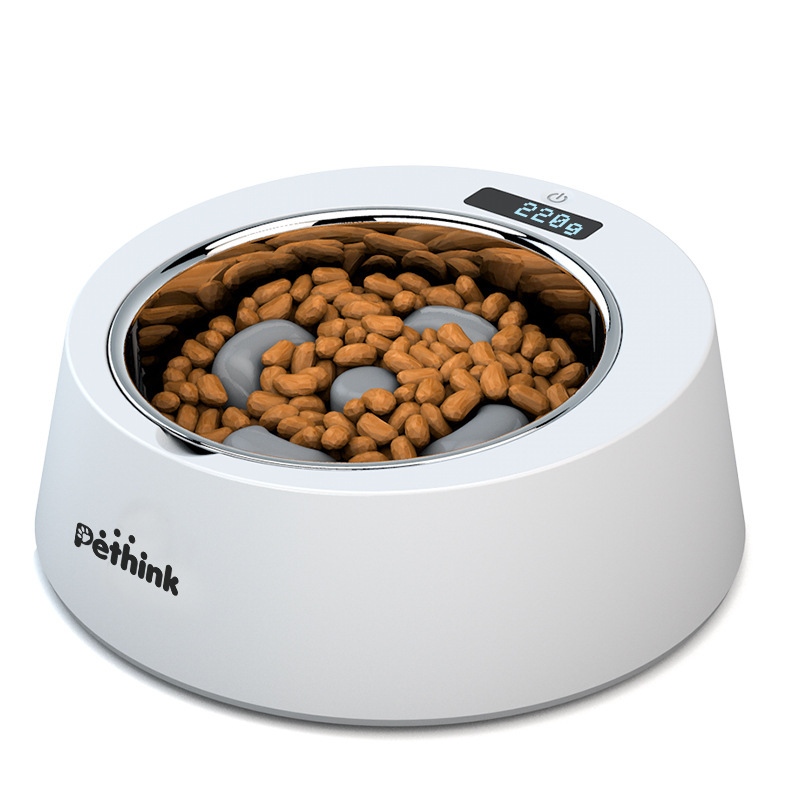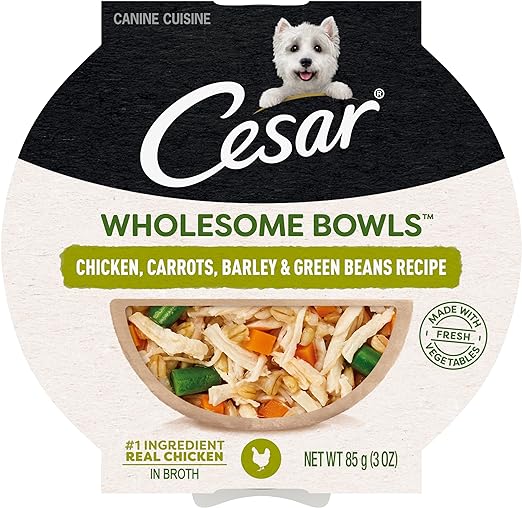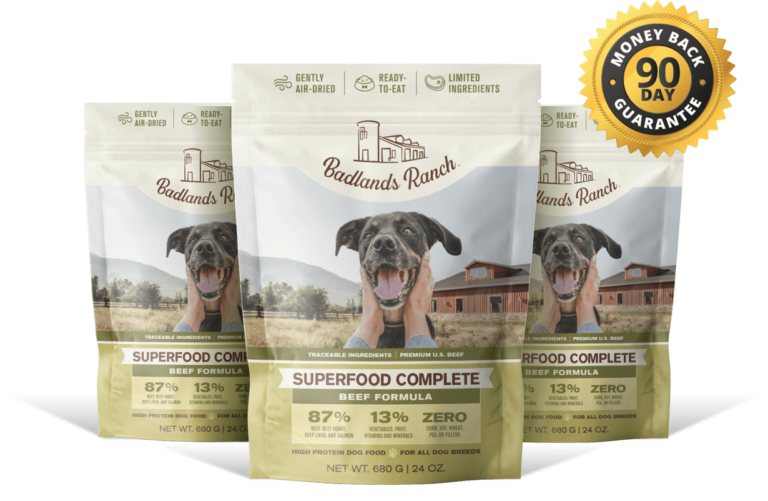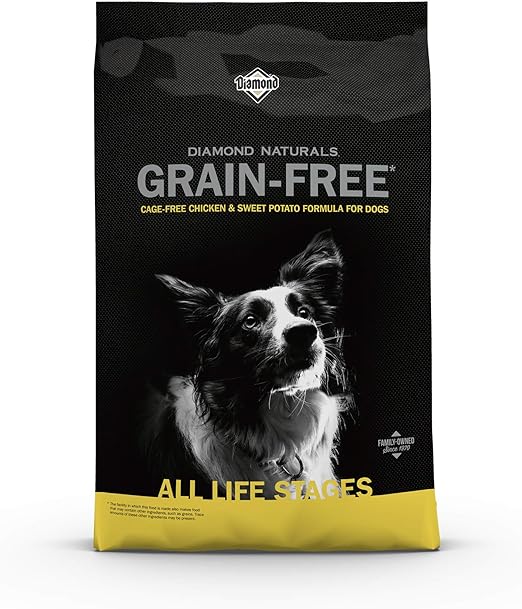As a dog owner, you know that mealtime is about more than just filling your pup’s tummy; it’s a chance to enrich their whole well-being. That’s why a slow feeder bowl can be such a game-changing investment for your four-legged friend. Designed to slow down fast eaters, these bowls promote mindful eating so your dog can fully enjoy their food. With better digestion, reduced choking hazards, and an enriched mealtime experience, slow feeding bowls check all the boxes. Choosing the right one comes down to your own pup’s needs and quirks. Take into account size, breed, age, and those funny little eating habits that make your dog one of a kind. With an open mind, a bit of positive reinforcement, and the right bowl, you can transform chow time into a relaxing ritual to share with your pup. slow feeder dog bowl
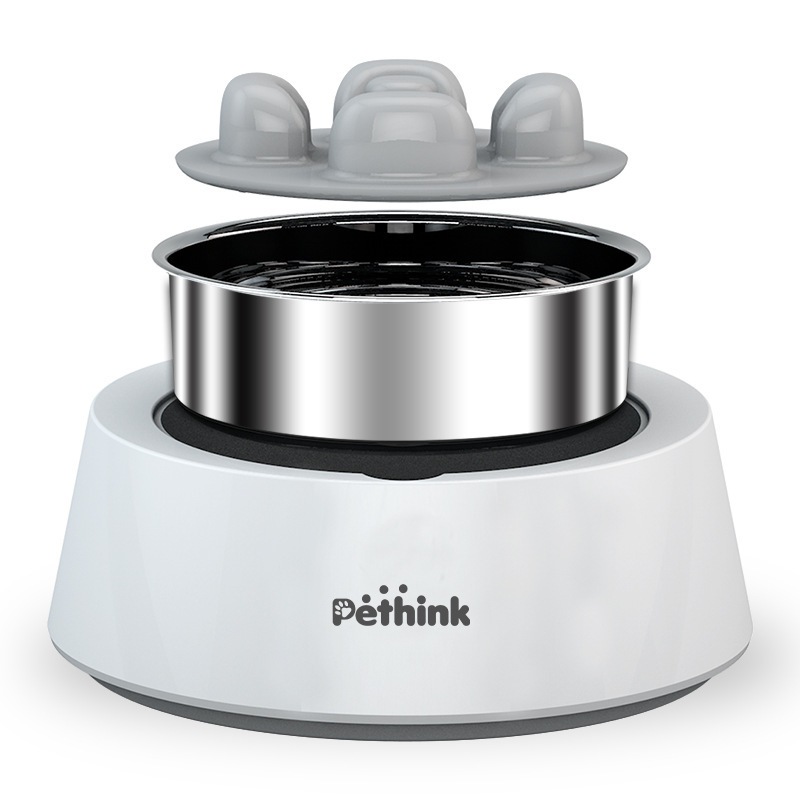
How Slow Feeder Dog Bowls Promote Health
A slow feeder bowl helps your dog eat at a slower, more natural pace. This has many benefits for their health and well-being.
Better digestion.
When dogs gobble down their food too quickly, they swallow a lot of air which can lead to gas, burping, and indigestion. Slow feeder bowls force your dog to eat slowly, allowing them to chew thoroughly. This makes it easier for their stomach to digest the food properly.
Prevents choking and bloat.
Eating too fast can cause dogs to choke on their food or gulp down air, increasing the risk of gastric dilatation volvulus (GDV) or bloat. Bloat is a life-threatening condition where the stomach fills with air, fluid, and gas, and twists. Slow feeder bowls greatly reduce the chances of choking and bloat by controlling how much your dog can eat at once.
Reduces behavioral issues.
When dogs eat too quickly, it can lead to anxiety, aggression, and other behavioral problems around mealtime. Slow feeder bowls help create a calmer eating environment by extending meal duration and engaging your dog mentally. This can help reduce undesirable behaviors like guarding the food bowl, begging, or barking for more food.
Enhanced enrichment.
Puzzle feeders and other interactive slow feeder bowls engage your dog’s mind by making them work for their food. This provides mental stimulation and enriches their eating experience. Many dogs find puzzle feeders and treat dispensing toys highly rewarding. This type of enrichment is especially beneficial for energetic or anxious dogs.
Slow feeder bowls are a simple way to improve your dog’s health, digestion, and behavior at mealtime. By slowing down their eating pace in an engaging way, these bowls promote an overall better experience for your canine companion. With the right introduction and positive reinforcement, a slow feeder bowl can become an easy and rewarding part of your dog’s daily routine.

Choosing the Right Slow Feed Dog Bowl
When it comes to finding the perfect slow feeder bowl for your dog, there are a few factors to keep in mind. The most important is choosing an appropriately sized bowl for your dog’s breed and age. For larger dogs or enthusiastic eaters, a bigger bowl with more obstacles is ideal, while a smaller bowl with fewer obstacles may suit a smaller dog better.
Consider your dog’s eating style and habits. If your dog gulps their food aggressively, look for a bowl with more obstacles, curves and twists to really slow them down. For a dog who eats at a moderate pace, a bowl with some obstacles and a shallow, wide shape may do the trick. Take into account any physical issues your dog may have that could affect their eating. An elevated slow feeder bowl could be helpful for dogs with arthritis or neck problems.
The material and design of the bowl also matter. Stainless steel or ceramic bowls that are dishwasher safe are ideal for easy cleaning. Look for a non-skid bottom to prevent the bowl from sliding around. Some bowls feature a puzzle-like design with compartments for the dog to sniff out kibble, which provides mental stimulation. Others have a spiral shape or include blocks, cones and ridges to navigate around.
With patience and positive reinforcement, introducing your dog to a slow feeder bowl can be an easy transition. Start by filling the bowl only partway and giving lots of praise when your dog uses it. Slowly fill it more over time as your dog gets accustomed to it. Make mealtime fun by alternating between the slow feeder and puzzle toys to prevent boredom.
A high-quality slow feed dog bowl is an investment in your dog’s health and wellbeing. By choosing an appropriately sized, well-designed bowl for your dog’s needs, you’ll be helping promote better digestion, prevent issues like bloat or obesity and enhance the overall experience of mealtime for your faithful companion.
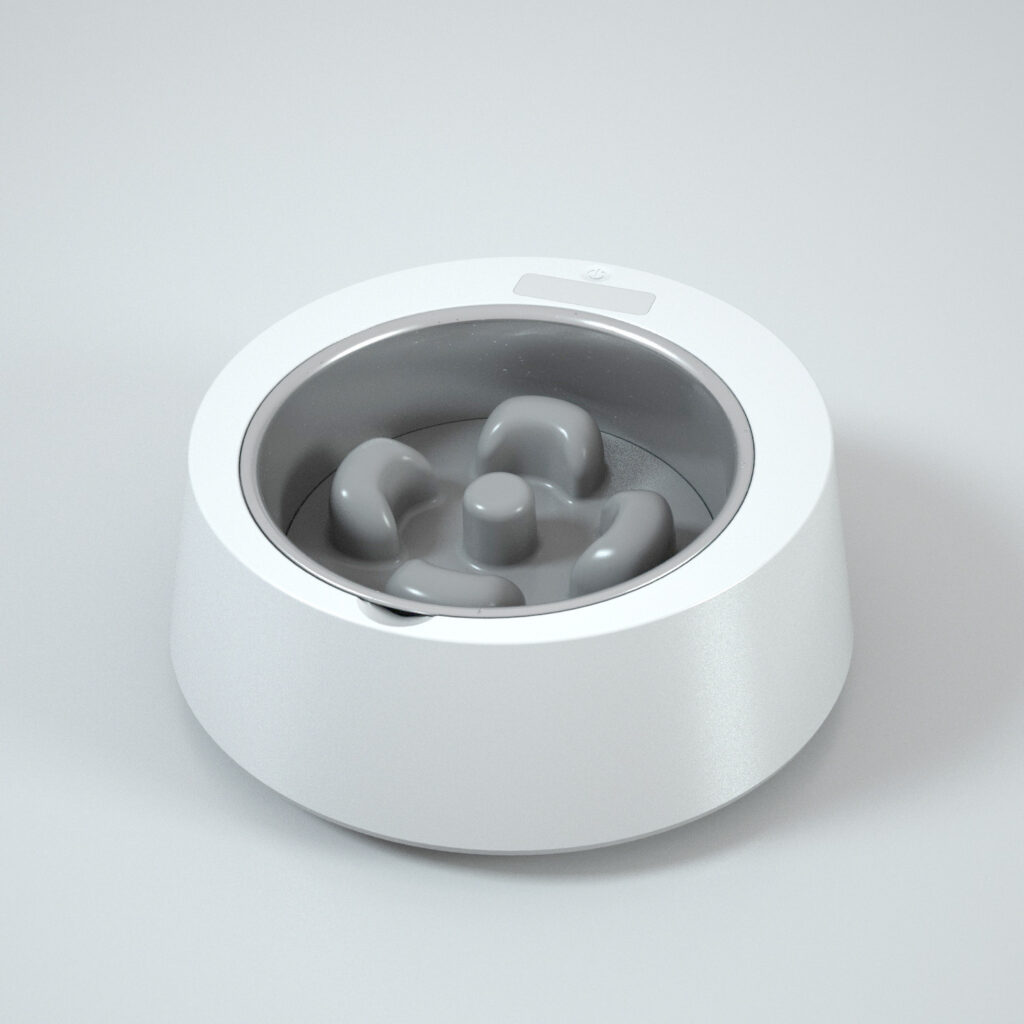
Introducing Your Dog to a Slow Feeder Bowl
When transitioning your dog to a slow feeder bowl, the key is to go slowly. Start by placing a small amount of their regular kibble in the bowl, while also offering some in their normal bowl. This allows them to get used to the new bowl with the security of their regular bowl as a backup.
Once your dog is eating comfortably from the slow feeder, you can start adding a bit more kibble to it at each meal. Gradually make the portions bigger in the slow feeder bowl while reducing the amount in their normal bowl. Within a week or so, your dog should be eating all their meals from the slow feeder bowl.
Be patient through this process and offer lots of praise and positive reinforcement. Some dogs may be unsure of the new bowl at first. Gently encourage your dog while also allowing them to set the pace. Forcing the issue can backfire and cause stress.
When your dog has fully transitioned to the slow feeder bowl, closely supervise the first few meals. Some dogs may try to pick up and toss the bowl, frustrated with the challenge. If your dog seems overly stressed, you may need to slow down the transition process. However, most dogs will quickly adapt with your support and praise.
Using an elevated slow feeder bowl stand can also help make the bowl more engaging and challenging for your dog. The height causes kibble to spread out more, slowing down eating. For smaller breeds, a stand also brings the bowl to a more comfortable height, encouraging your dog to stand rather than hunch over during meals.
With regular use and positive associations at mealtimes, a slow feeder bowl can become an enriching part of your dog’s daily routine. While the transition may require some patience, the long term benefits to your dog’s health and well-being make the effort well worthwhile.
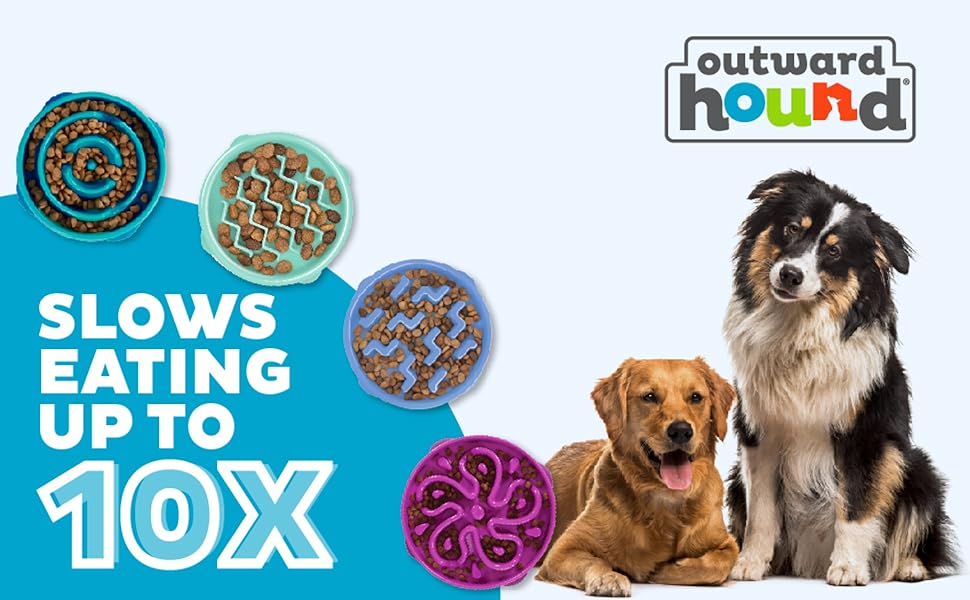
The Benefits of Slow Feeding for Your Dog
A slow feeder bowl provides several advantages for your dog’s health and well-being.
Improved Digestion
When dogs gulp down their food rapidly, they swallow a lot of air along with it. This can lead to gas, burping, and indigestion. Slow feeder bowls force your dog to eat at a more measured pace, allowing them to chew thoroughly and release less air into their stomach. Their digestion improves and they experience less discomfort after eating.
Healthier Weight
By slowing down mealtime, your dog’s stomach has time to signal to their brain that they’re no longer hungry before they’ve overeaten. This can help prevent obesity and encourage a healthy body weight
Better Mental Stimulation
Puzzle bowl designs require dogs to work for their food, keeping them engaged and challenging their mind. This provides mental stimulation and enrichment for your dog, staving off boredom and restlessness. Many dogs find puzzle feeders entertaining, and their enthusiasm for mealtime will increase.
Prevented Inhalation
For brachycephalic breeds like bulldogs that are prone to inhalation, slow feeder bowls can be a lifesaver. By controlling the rate at which your dog eats, there is less risk of them choking or aspirating food into their airways. Slow, mindful eating is essential for the health and safety of short-muzzled dogs.
A slow feeder bowl provides benefits for dogs of all breeds, sizes, and ages. With the right introduction and positive reinforcement training, you’ll find it enhances your dog’s mealtime experience in many ways. Their improved digestion, weight, mental stimulation, and safety will contribute to greater overall health and happiness.
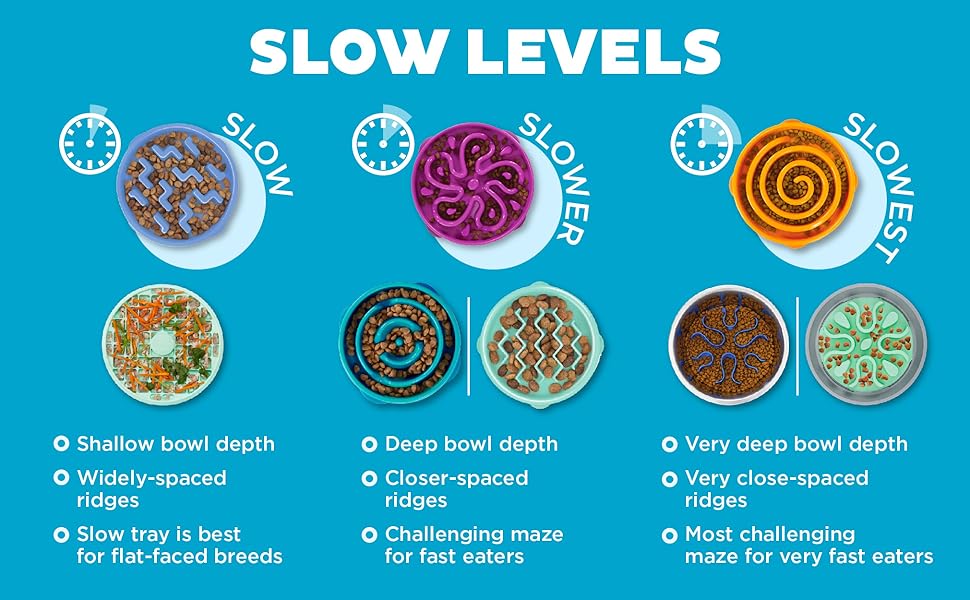
Slow Feeder Bowls FAQ
Are slow feeder bowls safe for all dogs?
Slow feeder bowls are safe for most dogs, but you’ll want to consider your dog’s size, age, and any medical conditions before switching to one. For very young puppies or small breed dogs, the openings or channels in some feeders may be too large, allowing them to ingest too much food too quickly. It’s best to start with a simple, shallow bowl with few obstacles before moving on to more complex designs. Senior dogs or those with dental or jaw issues may have trouble manipulating some slow feeders. As always, consult your vet if you have any concerns.
How do I transition my dog to a slow feeder bowl?
The key is to go slowly to allow your dog time to get used to it. Start by mixing a small amount of kibble in with their regular bowl at each meal. Over days or weeks, add more and more kibble to the slow feeder and less to the regular bowl. Lots of praise and positive reinforcement will help your dog associate the new bowl with a pleasant experience. Once your dog is eating comfortably from the slow feeder, you can stop using the regular bowl.
Some tips for an easy transition:
• Choose a simple slow feeder design at first, without too many obstacles. As your dog gets accustomed to it, you can introduce more complex bowls.
• Only fill the slow feeder half full at first so your dog can see the kibble. This makes it easier to eat from and prevents frustration.
• Hand feed your dog some kibble directly from the slow feeder at the start of meals. This shows them that the bowl contains food and makes it a positive experience.
• Be patient through the process. It can take days or weeks for some dogs to get used to the new bowl. With regular use and positive associations, your dog will come to prefer the slow feeder.
• Once your dog is eating well from the bowl, you can fill it to the normal level and no longer need to hand feed from it. Provide lots of praise to keep it a positive experience!
• Stick with the same slow feeder design and don’t switch between multiple types which can confuse your dog. Consistency is key.
Conclusion
At the end of the day, the slow feeder you choose for your pup should match their needs and eating style. Take some time to observe them during meals – are they gulping down food too fast? Getting nauseous after? Or maybe they just need some mental stimulation. Finding the right pick can lead to better health and happiness for your dog. And isn’t that what we all want for our furry best friends? Take a breath, do a little research, and make your selection. That small effort will pay off big time with years of improved digestion and engaging dinner times ahead.

